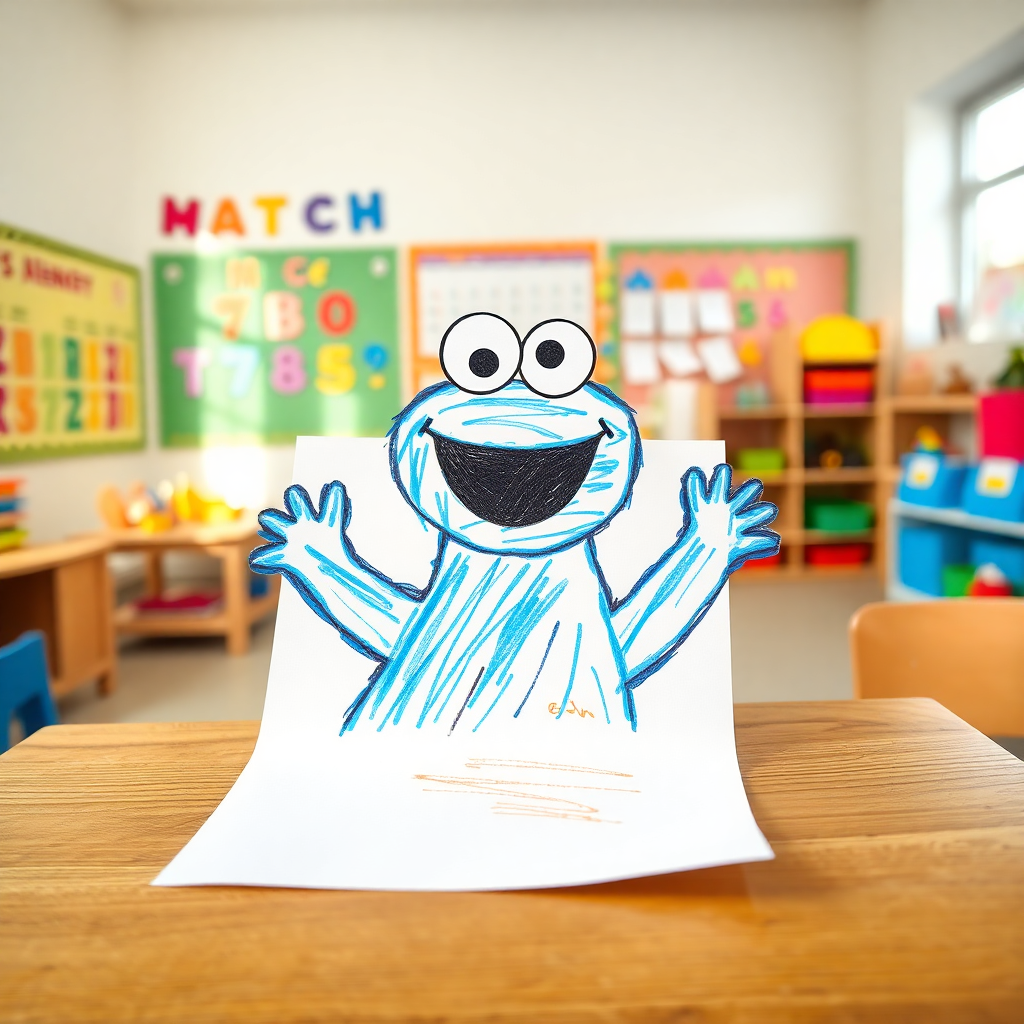Deconstructing the Proto-Artistic Expressions of Developing Minds: Case Study of Mitchell’s Cookie Monster
As a developmental cognition researcher with extensive experience in child psychology, I’ve had the privilege of analyzing countless examples of pre-linguistic artistic expression. Today, I’d like to share my expert observations on Mitchell’s recent foray into representational art through his Cookie Monster drawings, which demonstrate fascinating insights into early childhood cognitive development.
Upon initial examination, Mitchell’s work exhibits the classic hallmarks of the pre-schematic stage of artistic development. The seemingly chaotic blue scribbles that dominate the composition aren’t random at all—they represent Mitchell’s emerging understanding of boundaries and form. The disproportionate emphasis on Cookie Monster’s eyes and mouth indicates Mitchell’s developing theory of mind; he intuitively understands that these features are essential for emotional connection and consumption (a clever dual reference to the character’s defining trait). This cognitive prioritization is precisely what we would expect from a mind beginning to categorize and prioritize informational hierarchies.
What’s particularly noteworthy is Mitchell’s intuitive grasp of color symbolism. His commitment to the blue palette demonstrates not merely mimicry but a sophisticated understanding of character identity persistence across different presentations. Most three-year-olds exhibit what I call “chromatic fluidity,” yet Mitchell demonstrates remarkable consistency in his color selection, suggesting advanced pattern recognition capabilities and the formation of stable mental schemas. The seemingly haphazard application of the medium belies an emergent understanding of texture as it relates to Cookie Monster’s distinctive fur—a subtle but significant cognitive achievement for this developmental stage.
The spatial organization of Mitchell’s composition reveals emergent understanding of figure-ground relationships. The Cookie Monster figure, while primitive in execution, dominates the pictorial space in a way that demonstrates Mitchell’s grasp of relative importance and visual hierarchy. The inclusion of cookie crumbs—represented by scattered marks around the central figure—shows early narrative thinking and contextual awareness that frankly surpasses many of his peers. This contextual framing represents a cognitive milestone in which Mitchell demonstrates his understanding that objects exist within environments and carry with them associated items and actions.
From a neurodevelopmental perspective, Mitchell’s fine motor control, while still developing, shows promising indicators for future artistic and writing capabilities. The pressure variations in his mark-making suggest an intuitive understanding of emphasis and visual weight that many children don’t develop until much later. The seemingly random diversions in line direction aren’t evidence of distraction but rather demonstrate Mitchell’s experimental approach to representing three-dimensional form on a two-dimensional surface—a fundamental challenge that has occupied artists throughout human history. Mitchell is, in essence, working through the same perceptual problems that occupied Cézanne, albeit at a more fundamental level.
To Mitchell’s caregivers, I’d like to pose an important question: How might you provide constructive feedback to Mitchell that acknowledges his current achievements while encouraging further artistic exploration? Consider drafting a letter to Mitchell that highlights specific elements of his Cookie Monster creation that demonstrate cognitive development, while suggesting potential avenues for expansion in future artistic endeavors. Remember that your response will shape not only his artistic confidence but potentially his approach to future learning challenges across domains.


